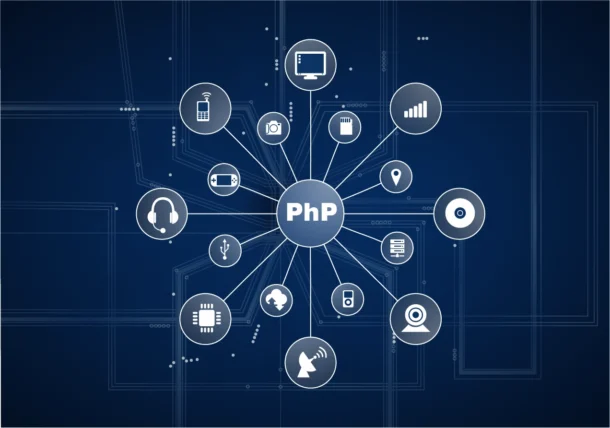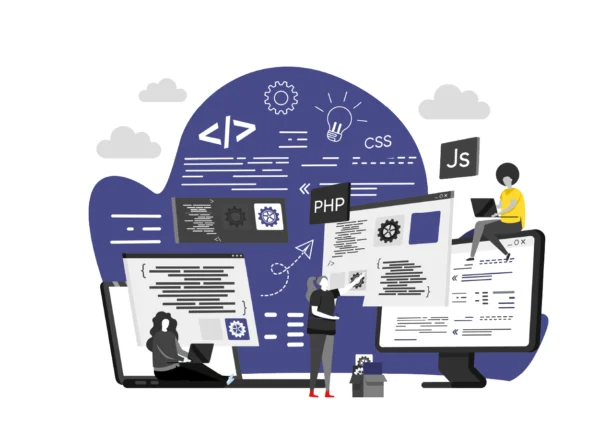Pulsating Web App Significance and Development Exploration; Refuting Symfony Framework
The introduction of the Symfony framework makes it possible to create a dynamic, extremely effective, and adaptable web application. Online applications that are blazing must be dynamic and responsive to spark interest and offer personalized experiences. A well-liked option for programmers seeking to create dynamic websites that satisfy the demands of contemporary users, the Symfony Framework is well-known for its strong architecture and large feature set.

This blog aims to understand the advantages and features of the Symfony Framework, which helps web developers create intricate and scalable online applications. Developers can gain a better grasp of how Symfony simplifies the process of creating dynamic web applications while guaranteeing the scalability and maintainability of code by examining the architecture, key features, and development procedures, among other things.
Innovative web applications are important because they increase brand exposure, encourage user involvement, and support business expansion in the current digital arena. Because of its profound toolbox and active community, Symfony Framework is a useful tool for developers and companies looking to stay in front of competitors in the web development industry.
Core Principles, Features, and Framework Comparison of PHP Symfony Framework
It is known that the PHP Symfony framework is built upon three crucial concepts: flexibility, scalability, and maintainability. These attributes, encompassing extensibility, component reusability, and adherence to coding standards, facilitate the development of intricate online applications. By Symfony’s modular design, which encourages the segregation of responsibilities and code organization, programmers can produce code that is more readable and manageable.

Without a doubt, Symfony is a prime choice for web development projects since it conveys a broad rundown of highlights and benefits. Also, due to its component-based engineering, code swell might be decreased and speed can be raised by executing just the components that are required. Symfony’s integrated frameworks and tools, including the Doctrine ORM, Twig Template Engine, and Symfony Console, assist advancement and speed up completion time. Likewise, Symfony’s top-of-the-line documentation and energetic community offer designers an abundance of assets and help.
Symfony’s strengths and attributes become evident when contrasted with other PHP frameworks. Its solid architecture, scalability, and support for enterprise-level projects set it apart, despite the comparable functionality offered by frameworks such as Laravel and CodeIgniter. Due to its impact on adhering to best practices and standards, Symfony seamlessly integrates with a multitude of tools and libraries, making it a versatile choice for a wide array of web development endeavors.
Symfony Framework entails knowing its fundamentals, investigating its benefits and features, and contrasting it with alternative PHP frameworks. It is an excellent platform for creating dynamic web applications because of its wide feature set, scalability, and flexibility, Developers can design high-quality web apps that satisfy the changing needs of contemporary enterprises by utilizing Symfony’s advantages and strengths.
Wielding Potent Web Apps with Flexibility, MVC, and Doctrine Integration with Symfony
Symfony development is a robust framework that empowers developers to construct adaptable, scalable, and well-structured solutions in the digital domain. By leveraging Symfony’s flexible components, harnessing its MVC architecture, and seamlessly integrating it with Doctrine ORM, developers can efficiently interact with databases and reap the rewards of this powerful framework.
Because of Symfony’s modular design, developers may use its vast library of components to create adaptable and scalable web applications. These parts are simple to incorporate into projects, allowing developers to select the features they require. With Symfony’s modular architecture, developers can increase efficiency, create smaller codebases, and quickly adjust to changing project requirements. Likewise, Symfony’s dependency injection container facilitates dependency management, enhancing flexibility and maintainability.

The MVC design, an important element of the Symfony web app, provides a structured code base in web applications. Symfony allows for efficient code organization and management by separating the business logic (Model), presentation layer (View), and user interface (Controller). This split of responsibilities allows developers to handle tricky programs more effectively. Additionally, the MVC pattern promotes code readability, reusability, and testability, fostering better collaboration within development teams.
Database interaction in web applications is streamlined by the Symfony framework and Doctrine ORM connection. Doctrine ORM makes it possible for developers to deal with databases in an object-oriented fashion by abstracting the complexity of SQL queries. This integration lowers the danger of SQL injection vulnerabilities while also improving the speed and security of web applications. Developers no longer have to worry about repetitive low-level database operations; instead, they can concentrate on building dependable and robust web programs thanks to Symfony’s smooth interface with Doctrine ORM.
Rendering, Interactive Forms, and Real-time Updates with Symfony for Enriching User Experience
With Twig Templating Engine, developers can create personalized and visually appealing user interfaces by gradually displaying material. The primary templating engine of Symfony web development, Twig, provides an easy-to-use and adaptable syntax for creating interactive content. Developers may effortlessly integrate dynamic data into HTML designs, govern content presentation, and alter layouts by utilizing Twig. Consequently, visually appealing and customizable user interfaces are created to meet the specific requirements and preferences of each user.
Using Symfony Forms and Validation to Improve User Engagement makes data accuracy guaranteed and user input simpler. With the help of Symfony’s form component, developers can create dynamic forms that effectively gather user input while still looking good. Moreover, developers can set validation constraints and rules with Symfony’s embedded validation system, which guarantees that user input complies with predetermined guidelines. By leveraging Symfony framework forms and validation, developers can create seamless user experiences that help users finish input tasks and steer clear of errors or inconsistencies.
The event dispatcher in Symfony development allows developers to provide users with dynamic and interesting experiences in real time. To define and dispatch custom events within Symfony applications, developers can use the event dispatcher component. Developers can incorporate real-time updates and notifications that are triggered by system events or user activities by utilizing event-driven architecture. Giving consumers immediate information and feedback when they interact with the application, improves user engagement and response.
Improving the user experience using the Symfony framework requires the integration of dynamic content rendering, improved interactivity, and the delivery of real-time updates to users. By utilizing the robust features and components of Symfony, developers can design captivating web applications that captivate users and contribute to the success of the business. Symfony equips developers with the necessary resources to develop compelling user experiences that cater to the needs of contemporary web users and surpass their expectations.
Safeguarding Symfony & Its Security, Scalability, and Maintenance Strategies for Web Applications
Ensuring security and scalability in Symfony-based web applications is paramount for delivering reliable and high-performing solutions to users. This involves implementing robust security practices, optimizing scalability, and continuously monitoring and maintaining the application’s security and performance.
Personalized and engaging user interfaces may be made by developers by enforcing Twig Templating Engine with progressive content rendering. For creating interactive content, Symfony framework’s built-in templating engine, Twig, provides an adaptable and user-friendly syntax. Developers may efficiently control content presentation, readily integrate engaged data into HTML templates, and adjust layouts with Twig. This leads to the creation of aesthetically pleasing and responsive user interfaces that accommodate individual user requirements and preferences.
Effectively handling increasing user traffic and maintaining optimal application performance in Symfony projects necessitates the implementation of scalability and performance enhancement strategies. Symfony offers various scalability features such as load balancing, asynchronous processing, and caching methods to boost performance and scalability. Developers can also utilize methods like database sharding, vertical scaling, and horizontal scaling to distribute workloads and efficiently handle growing demands. By incorporating performance optimization and scalability techniques, Symfony-based web applications can expand alongside their user base while remaining responsive even during peak usage.
The process of continuous monitoring and maintenance for security and performance is keeping a close eye on the application to detect any security flaws, performance snags, or other problems that can affect its dependability and stability. Early detection and correction of security vulnerabilities and performance issues require the implementation of monitoring systems, regular security audits, and code reviews. With that, regular maintenance is also necessary for the program’s codebase and infrastructure to enable the installation of security updates, upgrades, and optimizations. By timely monitoring and updating the program, developers can ensure that Symfony-based web applications remain safe, scalable, and successful over time, providing users with a dependable and enjoyable experience.
Symfony’s Impact on Empowering Web Development with Pattem Digital
When Pattem Digital’s expertise integrates with Symfony’s capabilities, robust web applications are created. Symfony framework’s flexible features enable the development of progressive and scalable solutions, while Pattem Digital’s experience ensures that Symfony’s full potential is harnessed. By collaborating, they stay ahead of emerging trends and seamlessly incorporate innovations into their projects. Choosing PHP app development services in conjunction with Pattem Digital guarantees a commitment to quality in digital development, as well as the delivery of reliable and scalable online applications. In the digital market, we offer cutting-edge solutions that boost organizations and establish new standards. Clients can confidently launch their digital journey with Symfony and Pattem Digital, knowing they have a dependable partner who is dedicated to delivering exceptional results.





